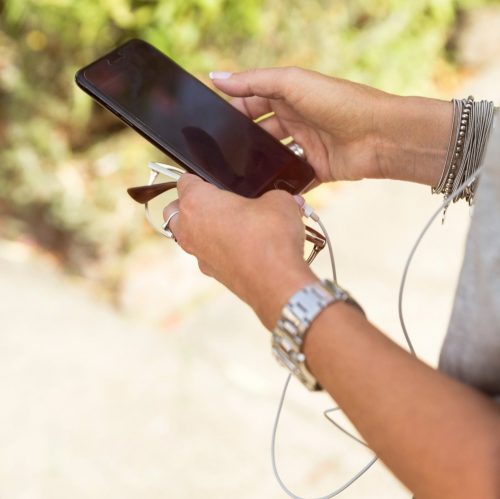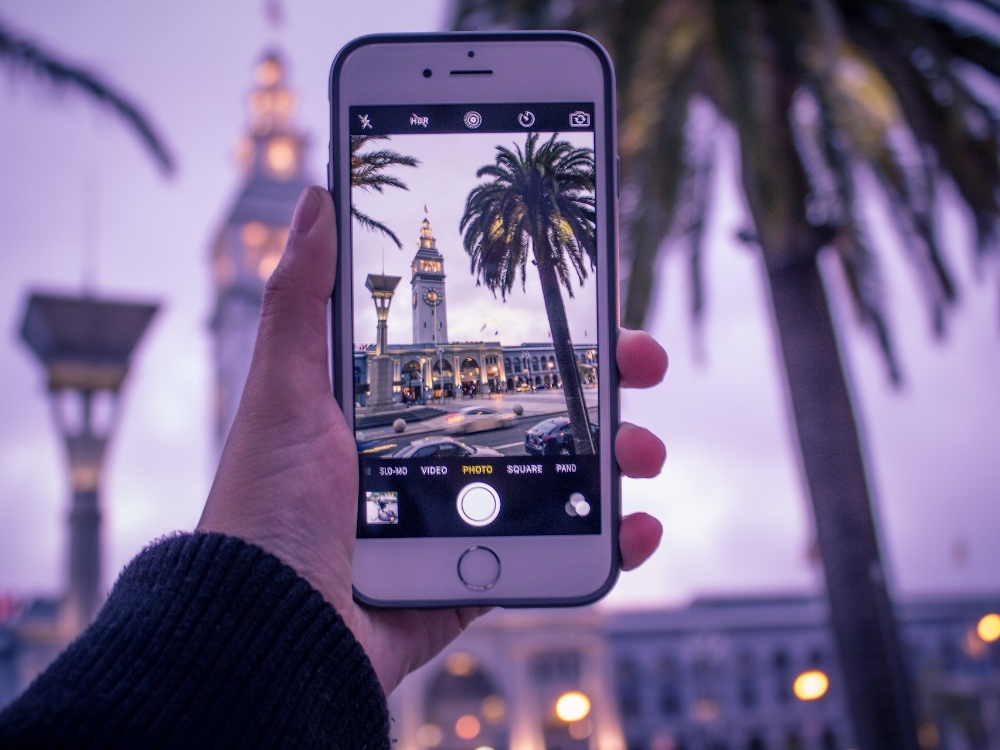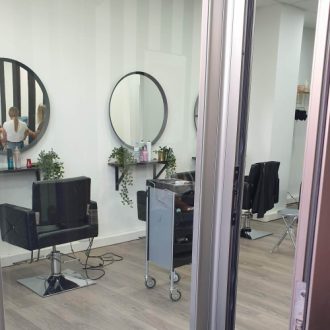
How Can I Best Communicate with a Traveling Loved One?
Dear Mr. Brown,
With the current situation it is now easier than ever to stay in touch, but might be harder than ever to figure out what works best for you. If you’re the parent or the loved one of someone who is abroad for a study abroad, teach abroad, or other international experience for the first time, we want to offer you some insight into overseas communication.
It’s true that some of the most common forms of communication while in the same country (think direct phone calls and SMS) will become too expensive to rely on. However, there are so many other (and in many cases, better) options available to you today that you needn’t worry about losing contact with your adventurer! Let’s talk about some of the best forms of international communication you’ll have available to you and what might be a normal frequency to connect through those means.
Instant Messaging platforms
We’ve talked about Whatsapp in more depth in this article, but the main thing for you to know is that by downloading this free app to your cell phone you’ll have access to unlimited, free international messaging. No need to opt for a very expensive (and limited!), international phone plan or texting allowance each month (which ARE available if you still don’t have a smartphone). For smartphone users, this is the quickest and most convenient form of communication as you can send text messages as frequently as you are used to sending them at no extra cost to anyone.
What’s more is that Whatsapp also has the option to leave voice messages, make phone calls, and use video chat! The option to leave voice messages can be especially convenient and personal when you have a lot to say but maybe can’t find the right time to connect because of the time difference. Likewise, when it is a good moment for both of you, using the calling option (audio only) or video chat option (audio and video) is such a quick and easy way to connect. Again, all of these options are free as long as you are on wifi or have access to data. Nowadays, you can also get a desktop version of Whatsapp that allows you to transfer over everything you see on your phone to the computer or tablet which may make it easier for you to type out long messages or more comfortable if you are using the video options.
We recommend Whatsapp because it is one of the most widely used application of its kind and we have used it all over Europe and South America. However, you may find that an alternative like Telegram or WeChat are more popular in other places (WeChat for example is the way to go in China). Also, keep in mind that if both you and your loved one have an iPhone, these kind of apps may not be necessary as iMessages continue to work free of charge as long as you are connected to the internet.
 Video Call platforms
Video Call platforms
As video chats become more popular, more platforms start to integrate this feature. While you can have calls with your loved ones around the world on apps such as Whatsapp, Facebook, Google+, and Facetime; Skype may be our favorite. This is because we believe it is one of the most reliable forms of communication for longer video calls. This is the platform we tend to use every time we plan a video chat with someone who is far away. This is because we have found that the connection is one of the most reliable as each person tends to be on their home wifi rather than going in and out of range on their cell phone (although Whatsapp, Skype, Facebook, etc can ALL be accessed on phone and desktop as well).
This platform also allows you to send text messages, leave voice messages, etc., but be sure that your loved one has the Skype app on their phone or regularly opens and checks their account if you plan to communicate through this means (as opposed to sending general updates via a instant messaging platform such as Whatsapp). Remember, most people who use Skype tend to sign into it only when they plan to make phone calls so timeliness in seeing and responding to messages will likely not be as reliable.
One final bonus of Skype is that you can add money to your account and use this for low-cost international calling to any phone number as well. This is ideal for any issues travelers may have abroad (at which time they may need to make calls to banks, offices in their home country, etc.) as well as for contacting friends and family that aren’t so well connected to the internet. Just remember that you will be calling from an unusual, foreign number. Skype will ask for your name to put on the caller ID but this doesn’t necessarily show up every time.
Group call platforms
One thing that we are seeing quite a lot of recently is the explosion of platforms where people can come together and talk in a group. While you do have that option on Skype, it can be restricted to certain accounts. Some platforms that encourage larger groups of people getting together (and perhaps having a virtual coffee or tapas meeting) include Google Hangouts and Zoom,. In times when you have different family members and friends in different places around the world, these applications can make you feel like you are all in one place, together and celebrating again.
It is good to keep in mind, however, that most of these group call platforms have a for profit goal. Therefore, while all of these platforms have no-cost member options where you can access what they offer for free, if you want full access to what they have to offer, you will probably be charged. When using these platforms, make sure that you check out the rules before you go and keep in mind that with these platforms you may be restricted to the number of guests you invite or the length of time you can meet before you have to pay.
The frequency of contact you can expect from each individual form of communication discussed here depends greatly on the individual personality of your traveler and their tendencies before moving abroad. If your loved one is someone who is active and timely with their email inbox, then this might be another efficient form of communication. We have found that it is easier to carry out day-to-day contact via Whatsapp and reserve email for more special moments when we want to write something rather personal. In addition, as personal emails get mixed in with work, school, and other ‘professional’ correspondence, it can be easy to leave these emails unanswered for awhile as they may not feel like the priority. Simply be aware of this and don’t worry too much if your travelers is not responding so quickly via email.
Social Media
For most travelers, social media platforms like Facebook, Snapchat, and Instagram are going to be the go-to way of communicating their adventures with loved ones back home. This is a great no-need-to-plan way to stay connected while your loved one is abroad and we highly recommend following any accounts they may have.
 First and foremost, these are your best bet in terms of seeing photos of all the amazing places they are going and things they are doing. This can create a more intimate understanding when you hear about what is going on wherever your loved one may be. While it’s not completely necessary to follow along on social media, being able to see photos can easily make you feel you closer and that you can understand more about the experience they’re having so many miles away.
First and foremost, these are your best bet in terms of seeing photos of all the amazing places they are going and things they are doing. This can create a more intimate understanding when you hear about what is going on wherever your loved one may be. While it’s not completely necessary to follow along on social media, being able to see photos can easily make you feel you closer and that you can understand more about the experience they’re having so many miles away.
In addition, the younger generation is often recognized at being really good at updating social media and not so good at remembering to call or write home so this could increase the amount of ‘communication’ you’re getting, even if it’s public and not personal. While it probably doesn’t compensate for a nice, personalized message, it is a nice way to know what is going on where your loved one is and catch up on special events going on in their lives. And, of course, you can make this form of communication feel more personal by commenting or sending a direct message about the update you see.
Blog
One final form of digital communication that may be available to you is following your adventurer’s blog (if they write one, of course!). Especially for first time travelers, blogging is a common way of documenting their experience which serves two purposes. Firstly, it provides updates and insights from their life abroad for loved ones back home and, secondly, it will always be there for them to look back on, too. If your traveler is not planning to write a blog, you may want to encourage them to do so for both of these reasons.
Although this would, again, be a more public than private form of communication it’s a great opportunity to have as you will likely get more of an inside look at your loved one’s daily life while living abroad. Often times, the little things that we think to include when writing about our experiences means that we provide more detail and reflection than we might when chatting over Skype. This is not a purposeful omission when sharing their stories with your directly, but simply a matter of talking in-the-moment rather than preparing a blog entry on a weekly (more or less) basis.
As with social media, following your adventurer’s blog can help you feel connected with them even when you are not communicating directly and each of these methods allows you to go back and see their happy face when you might be missing them. At the same time, it allows you to see more of their lives and therefore know specifics to ask them about the next time you speak via Whatsapp, Skype, or email, bringing it all full circle.
Snail Mail
 Sadly, most of us have to put old-fashion letter- and postcard-writing last. The reality is that this kind of communication may end up being the most precious, tangible, and best form…but it is also typically the one you should least expect. While we do have plenty of information here for travelers about the importance of sending home letters and postcards, as well as some of the basics to know when sending mail home, we recognize that it may feel a little intimidating for a first time traveler to maneuver the post office scene in a foreign country and foreign language.
Sadly, most of us have to put old-fashion letter- and postcard-writing last. The reality is that this kind of communication may end up being the most precious, tangible, and best form…but it is also typically the one you should least expect. While we do have plenty of information here for travelers about the importance of sending home letters and postcards, as well as some of the basics to know when sending mail home, we recognize that it may feel a little intimidating for a first time traveler to maneuver the post office scene in a foreign country and foreign language.
Even for someone who DOES know how to do this and who has the best intentions may end up with a pile of postcards that sits in their room until they return home and hand them out as souvenirs. While we highly recommend sending a few cards/letters (maybe even a package? Read our tips here!) to your loved one to encourage this kind of traditional communication, we have to warn you that the favor may not always be returned, at least not with the same frequency. And remember, this is especially for the travelers who is active with all other digital forms of instant communication, this method tends to fall to the wayside.
We hope this list of modes of communication for communicating internationally as well as general estimates of how frequently and deeply you can expect to connect through each is helpful for you. Let us know if there are any other forms of staying in touch you have found useful or if you have doubts about how to best utilize or manage any of these. Just as we hope to be a source of knowledge for your traveling loved one, we want to be here to help YOU through this journey as well! Much love to all you parents and family members making the effort you’ve already made to find this article; you are much appreciated!
Sincerely,
Spain




